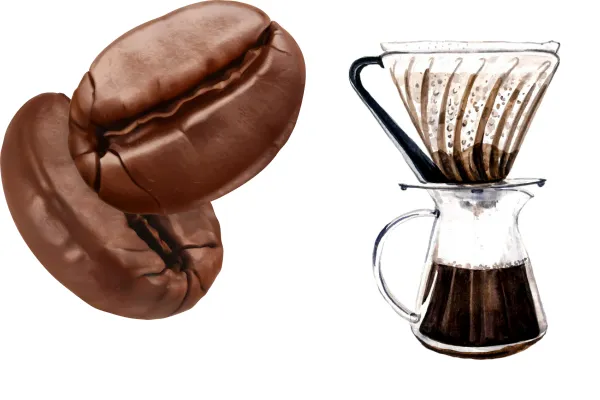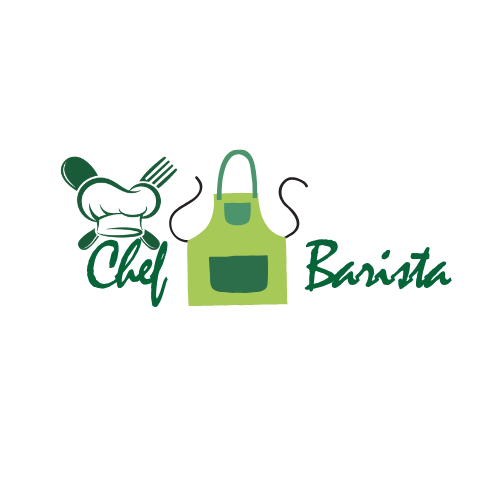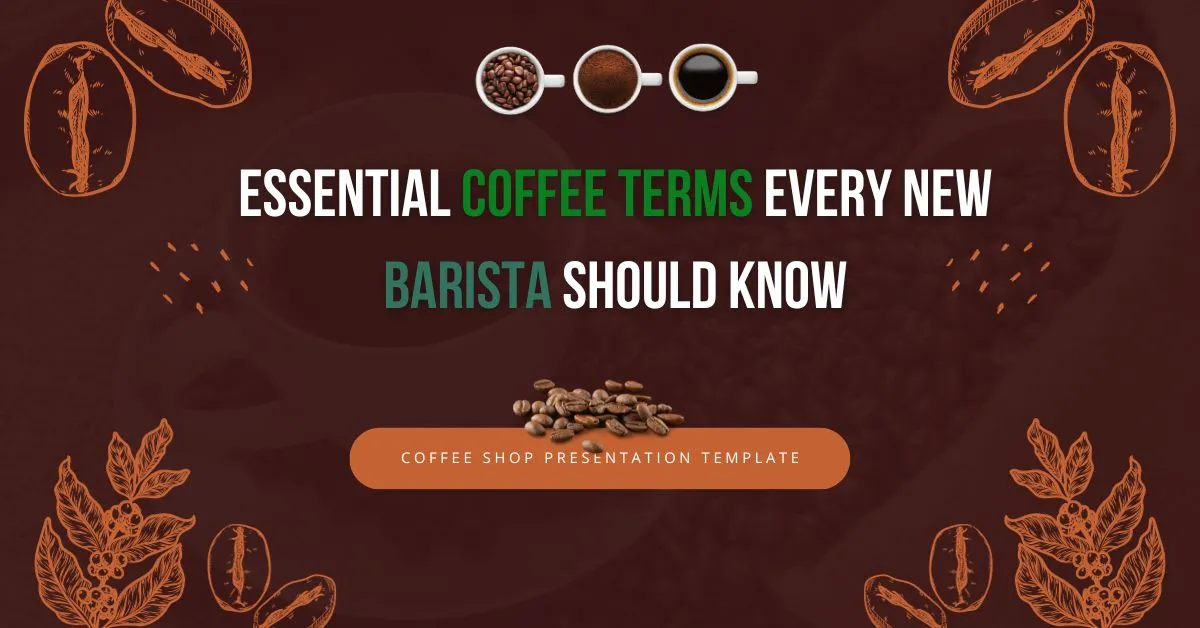As a new barista, you’re feeling overwhelmed by the vast world of coffee terms. Understanding key coffee words, on the other hand, will help you master your coffee knowledge and serve clients better.
Table of Contents
Importance of Knowing coffee terms
Coffee terminology is essential for novice baristas since it allows them to interact efficiently with other baristas and consumers. Understanding coffee terminology enables baristas to accurately accept orders and prepare drinks to the customer’s demands. Knowing coffee terminology can also help baristas make recommendations to customers depending on their tastes. We know, that understanding coffee terminologies is critical for any new barista who wants to provide their customers with a high-quality coffee experience.
Coffee Terms
We all know that coffee is a complicated and diverse beverage with numerous names and jargon associated with it. Here are some common coffee terms:
Coffee Beans
The two main species of coffee beans:
| Bean | Characteristics |
| Arabica | One of the two main species of coffee beans (the other is Robusta). Arabica beans are known for their milder flavor and are typically considered higher quality. |
| Robusta | The other main species of coffee beans, known for their stronger, more bitter flavor. They are commonly used in espresso blends and instant coffee and have a greater caffeine level. |
Espresso Terminology
A coffee beverage made by pushing hot water through finely-ground coffee beans. We must recognize that espresso serves as the foundation for many other coffee drinks, such as cappuccinos and lattes. Keywords related to espresso:
| Term | Definition |
| Crema | The creamy coating appears on top of a well-made espresso shot. It is important to remember that it is a combination of coffee oils and carbon dioxide that contributes to the flavor and aroma of the espresso. |
| Tamping | Compacting grounds in filter |
| Dose | Amount of ground coffee per shot |
| Yield | Amount of espresso extracted |

Brewing Methods
The process of making coffee by extracting flavors from coffee grounds using water. There are various methods of brewing coffee, including drip brewing, espresso, French press, pour-over, and more. Some common ways to brew coffee:
| Method | Description |
| Drip | A common method of brewing coffee is using an automatic drip coffee maker. It involves hot water dripping over ground coffee in a filter. |
| French Press | A coffee brewing method involves steeping coffee grounds in hot water and then pressing them with a metal or mesh plunger to separate the liquid from the grounds. |
| Pour Over | A method of brewing coffee by hand in which hot water is poured evenly over ground coffee in a filter. We have complete control over the brewing process. Using this method. |
| Cold Brew | Coffee is brewed with cold water over an extended period (usually 12-24 hours). It results in a smoother, less acidic coffee concentrate that is often diluted with water or milk. |
| AeroPress | A portable coffee brewing equipment that swiftly extracts flavors from coffee grinds by using air pressure. |
| CEMEX | A pour-over coffee brewing method that uses a specific type of glass or ceramic coffee maker, often with a unique design. |
| Turkish Coffee | A traditional coffee preparation method where very finely ground coffee is simmered with water and sugar, resulting in a strong and often sweet brew. |
| Moka Pot | Coffee is made by passing hot water through a paper or metal filter containing coffee grounds, commonly brewed in a drip coffee maker. |
| Filter Coffee | Coffee made by passing hot water through a paper or metal filter containing coffee grounds, commonly brewed in a drip coffee maker. |
Espresso Drinks
Espresso-based beverages:
| Drink | Ingredients | |
| Espresso | A small, concentrated serving of espresso, typically about one ounce (30 mL) | |
| Macchiato | Espresso with a dollop of foam | |
| Cortado | Espresso with warm milk | |
| Cappuccino | Espresso, steamed & foamed milk | |
| Latte | A coffee drink made with espresso and steamed milk, typically topped with a small amount of frothed milk | |
| Americano | A coffee drink produced by combining a shot of espresso with hot water. | |
| Mocha | A coffee drink made with espresso, chocolate syrup, and steamed milk. | |
| Ristretto | A quick and concentrated shot of espresso made with less water for a stronger flavor. | |
| Frappe | Iced blended coffee or cream-based drinks | |
Flavor
Descriptors for tasting notes:
- Fruity, floral, nutty
- Sweetness, acidity
- Bitterness, dryness
- Chocolatey, earthy
Equipment
- Espresso Machine – A device that brews espresso by forcing hot water through finely ground coffee under pressure.
- Burr Grinder – Evenly crushes beans for consistent grind.
- Drip Machine – Automatic brewing with hot water dripping onto grounds.
- French Press – Steeping and plunging grounds.
- Pour Over – Manual pouring of water over ground.
- Moka Pot – Stovetop espresso maker.
- Tamper – Compacts grounds before brewing.
- Knock Box – Disposes of wet grounds.
- Cupping Bowls – For assessing taste profiles.
- CEMEX – Pour over brewer with distinctive flask.
- Coffee Scale – Weighs grounds for precision.
Coffee Culture
- Third Wave Coffee – Focus on quality, origins, and artisan preparation. Specialty roasters and cafes.
- Single Origin – Valuing distinct flavor profiles from specific farms/regions.
- Subscriptions – Regular delivery of fresh beans from roasters. Exploration and convenience.
- Latte Art – Creating decorative designs on milk foam, requires skill.
- Coffeehouses – Social atmosphere, community.
- Baristas – Skilled, professional brewers and servers.
- Coffee Breaks – Short work breaks for coffee and socializing.
Some More Coffee Terms
- Coffee Bloom: The initial release of carbon dioxide gas from freshly roasted coffee grounds when hot water is added, creating a bubbling effect.
- Coffee Cherry: The fruit that contains coffee beans; it’s red when ripe and typically removed to extract the beans.
- Espresso Tamper: A tool used to evenly compress coffee grounds in the portafilter, ensuring uniform extraction.
- Cupping: A method for evaluating the aroma, flavor, and quality of coffee by professional tasters.
- Coffee Grinder: A device used to crush coffee beans into various grind sizes for brewing.
- Espresso Crema: The rich, golden foam that forms on top of a well-pulled espresso shot, an indicator of a properly brewed shot.
- Extraction Time: The duration for which hot water is in contact with coffee grounds during the brewing process, affecting flavor and strength.
- Knock Box: A container used to dispose of used coffee grounds and the “puck” left after pulling an espresso shot.
- Single-Origin Espresso: Espresso made exclusively from beans sourced from a single geographic region or farm, highlighting the unique flavor characteristics of that source.
- Coffee Subscription: A service where coffee is delivered to subscribers regularly, often featuring different beans and roasts from various regions.
Conclusion
They can also take orders accurately, produce drinks to the customer’s specifications, and offer recommendations based on client preferences. Remember this mantra: mastering coffee terms is essential for any barista who wants to thrive in the coffee industry and provide their customers with an exceptional coffee experience. Also, check these top 2 barista courses.








